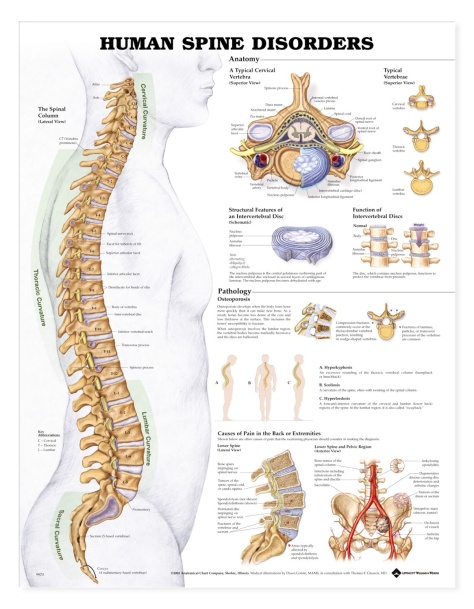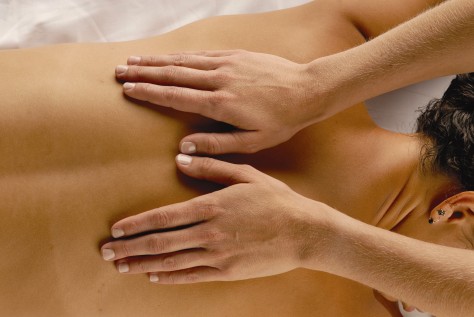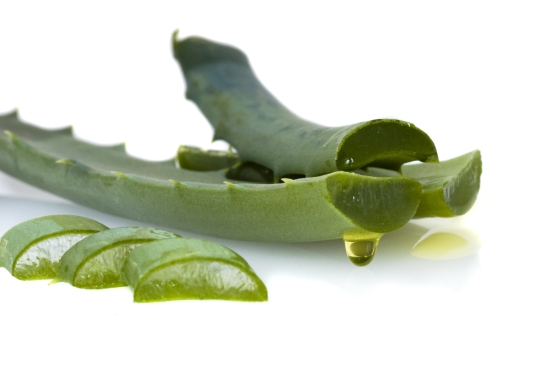 What Does Research Tell Us About Fetal Risk?
What Does Research Tell Us About Fetal Risk?
Any factor that may jeopardize the health of the fetus and subsequent neonatal amid pregnancy and post-birth constitutes a fetal risk. A recent study (Desai, et al, 2014) of 1.1 million Medicaid-enrolled women with completed pregnancies revealed that 21.6% had filled a prescription for an opioid during pregnancy. An opioid is an opium-like compound. It is a narcotic that has the potential to be addictive and dangerous when misused. The most commonly prescribed drugs in the study were codeine and hydrocodone. Studies show that oxycodone (Oxycontin) and hydrocodone (Vicodin) cause more deaths per year than heroin and cocaine combined (Center for Disease Control and Prevention, CDC, 2011).
 Another study (Bateman, et al, 2014) focused on the opioid utilization of another large (534,500) cohort of women who had completed pregnancies and were commercially insured. Among this population, 14.4% were dispensed an opioid at some point in their pregnancy. Again the most common drugs were codeine, hydrocodone and oxycodone. Both studies conclude that exposure to opioids during pregnancy is common, especially among Medicaid-enrolled women. Opioids were dispensed during all three trimesters, and in a small percentage of the cohort, dispensed three or more times during pregnancy. Also notable was the high regional variation with which the drugs were dispensed. Rates were highest in the South and lowest in the Northeast. Only about 10% of the total prescriptions were related to surgical procedures and 1% was related to women who had been using opioids chronically before pregnancy. If opioid use is justified in this 11%, it is questionable whether or not opioid use was a necessity in the other 89%. With such a high rate and degree of exposure, and the small, inconsistent body of literature on the safety of their administration during pregnancy, more research should be conducted to determine whether or not such an administration of these drugs is sound.
Another study (Bateman, et al, 2014) focused on the opioid utilization of another large (534,500) cohort of women who had completed pregnancies and were commercially insured. Among this population, 14.4% were dispensed an opioid at some point in their pregnancy. Again the most common drugs were codeine, hydrocodone and oxycodone. Both studies conclude that exposure to opioids during pregnancy is common, especially among Medicaid-enrolled women. Opioids were dispensed during all three trimesters, and in a small percentage of the cohort, dispensed three or more times during pregnancy. Also notable was the high regional variation with which the drugs were dispensed. Rates were highest in the South and lowest in the Northeast. Only about 10% of the total prescriptions were related to surgical procedures and 1% was related to women who had been using opioids chronically before pregnancy. If opioid use is justified in this 11%, it is questionable whether or not opioid use was a necessity in the other 89%. With such a high rate and degree of exposure, and the small, inconsistent body of literature on the safety of their administration during pregnancy, more research should be conducted to determine whether or not such an administration of these drugs is sound.

Prescription drug opioid use during pregnancy has harmful effects during the critical stages of fetal development
FDA Safe Drug Classifications
The FDA-assigned pregnancy categories as used in the Drug Formulary are as follows:
- Category A: There is adequate evidence that there is no risk to fetuses.
- Category B: Animal studies have failed to show a risk to fetuses; no well-controlled studies have been completed in humans.
- Category C: Animal studies have shown a risk to fetuses; there are no well-controlled studies in humans. However, “potential benefits may warrant use of the drug in pregnant women.”
- Category D: There is evidence of fetal risk, but “potential benefits may warrant use of the drug in pregnant women.”
- Category X: There is too much evidence of risk to prescribe these drugs to pregnant women.
Two categories (B & C) illustrate no research in humans. Opioids likely fall into a grey area somewhere around Category D. The point is that current knowledge and understanding of which drugs are safe during pregnancy is rudimentary. Not only is the medical and pharmaceutical literature naive about pregnancy, but it is grossly misinformed about dosages for women in general.
 Differences in Metabolism of Men and Woman
Differences in Metabolism of Men and Woman
Biological differences among sexes can be extremely relevant and critical to proper administration of drugs, but these nuances are often ignored. Earlier this year the FDA finally lowered the recommended dose of Ambien (zolpidem) for women – it was cut in half. This astonishing revelation comes after the drug has been on the market for 14 years. Women metabolize the drug differently than men and need far less to achieve the same effects. Women prescribed Ambien have likely been overdosing on it, the drug still active in their bodies as they get up in the morning and drive to work. Another example – low dose aspirin lowers the risk of heart attack in healthy men, yet does not lower the risk of heart attack in women, but may protect against stroke instead.
 Dr. Melina Kibbe is a vascular surgeon who runs a lab at Northwestern University Medical School. She notes that the vast majority of animal studies across the country are done on male rats; only male rats – as the control. Animal studies comprise much of the medical literature, and all of the animal studies are male dominant. Much of women and men’s biology, not even counting our obviously opposing reproductive biology, is fundamentally different where drug dosages are concerned. This fact is completely ignored or not even understood in much of the medical community. If women themselves aren’t accounted for in the literature with regards to drug dosages, is it to be expected that the dosages during a sensitive time like pregnancy are any better understood?
Dr. Melina Kibbe is a vascular surgeon who runs a lab at Northwestern University Medical School. She notes that the vast majority of animal studies across the country are done on male rats; only male rats – as the control. Animal studies comprise much of the medical literature, and all of the animal studies are male dominant. Much of women and men’s biology, not even counting our obviously opposing reproductive biology, is fundamentally different where drug dosages are concerned. This fact is completely ignored or not even understood in much of the medical community. If women themselves aren’t accounted for in the literature with regards to drug dosages, is it to be expected that the dosages during a sensitive time like pregnancy are any better understood?
According to Cheryl S. Broussard, “Fewer than 10 percent of medications approved by the F.D.A. since 1980 have sufficient data to determine fetal risk.” Moreover, pregnant women are taking more prescription drugs now than at any time in the past 30 years. A study (Broussard, et al, 2011) showed an association between early maternal opioid use and certain birth defects. Maternal opioid use may increase the risk of certain congenital defects such as neural tube defects (NTD’s) which affect the brain, spine and spinal cord. Mothers with pregnancies affected by an NTD reported opioid use more often during the first two months of pregnancy than mothers of babies without an NTD. 3.9 % of mothers of children with NTD’s reported using opioids early in pregnancy, compared to just 1.6 % of mothers of children without NTD’s.
 “Opioid use in very early pregnancy is associated with an approximate doubling the risk of neural tube defects,” said Martha M. Werler, the senior author and a professor of epidemiology at the Boston University School of Public Health. “About half of pregnancies are not planned, so that’s a big chunk of women who may not be thinking about possible risks associated with their behavior.” Not only might opioids increase the fetal risk by way of defects, but in cases where the drug use is more prolonged, infants may be born with what is known as neonatal abstinence syndrome (NAS). Opioids and other substances may pass through the placenta to the fetus during development. As the baby is born it may be dependent on the drug and have withdrawal symptoms without treatment.
“Opioid use in very early pregnancy is associated with an approximate doubling the risk of neural tube defects,” said Martha M. Werler, the senior author and a professor of epidemiology at the Boston University School of Public Health. “About half of pregnancies are not planned, so that’s a big chunk of women who may not be thinking about possible risks associated with their behavior.” Not only might opioids increase the fetal risk by way of defects, but in cases where the drug use is more prolonged, infants may be born with what is known as neonatal abstinence syndrome (NAS). Opioids and other substances may pass through the placenta to the fetus during development. As the baby is born it may be dependent on the drug and have withdrawal symptoms without treatment.

One study (Patrick, 2012) found that babies with NAS were more likely than any other hospital births to have a low birth weight. It also found a substantially increased incidence of NAS from 2000 to 2009, as well as hospital charges that were relatedly high. Even over-the-counter drugs that are commonly used for pain management could pose risks to fetuses. It was well-publicized that the active ingredient in Tylenol (acetaminophen) was the leading cause of acute liver failure in Americans between 1998 and 2003.
 Newer data has suggested that maternal use of acetaminophen can result in an increased risk for the development of hyperactivity disorders like ADHD or hyperkinetic disorders (HKD’s) in children. The children of women who took acetaminophen during pregnancy had a 30% increased risk of developing ADHD and a 37% increased risk of developing HKD by age 7. The etiology of a disorder like ADHD is complex and assuming complete causality with regard to environmental exposures may be an oversimplification. Acetaminophen currently has no FDA classification for use in pregnant women. However, the associations have been clearly observed and should render public health relevance (Liew, Ritz, et al, 2014). Pain is a common side-effect of pregnancy because of weight gain, postural changes and pelvic floor dysfunction. Women who are pregnant or nursing could choose to be cautious in using drugs, and instead look to complementary and alternative methods of pain management.
Newer data has suggested that maternal use of acetaminophen can result in an increased risk for the development of hyperactivity disorders like ADHD or hyperkinetic disorders (HKD’s) in children. The children of women who took acetaminophen during pregnancy had a 30% increased risk of developing ADHD and a 37% increased risk of developing HKD by age 7. The etiology of a disorder like ADHD is complex and assuming complete causality with regard to environmental exposures may be an oversimplification. Acetaminophen currently has no FDA classification for use in pregnant women. However, the associations have been clearly observed and should render public health relevance (Liew, Ritz, et al, 2014). Pain is a common side-effect of pregnancy because of weight gain, postural changes and pelvic floor dysfunction. Women who are pregnant or nursing could choose to be cautious in using drugs, and instead look to complementary and alternative methods of pain management.
 Alternative and Complimentary Treatment
Alternative and Complimentary Treatment
Dr. Pamela Flood and Dr. Srinivasa N. Raja, a professor in anesthesiology at Johns Hopkins University School of Medicine, noted that the most common forms of pain (back, abdominal and joint) were not even substantially helped by opioids, but were more thoroughly ameliorated by non-drug interventions like physical therapy. They note that while taking drugs may be easier, the more time-intensive use of other therapies is often more effective. One recent study (Pennick and Liddle, 2013) concluded that both acupuncture and exercise are effective in treating low back pain and pelvic pain during pregnancy. Another study details the case of a 23-year-old at 27 weeks whose chronic pelvic pain was “incapacitating” on narcotics. The use of acupuncture allowed her to limit her use of narcotics and maintain normal activities of daily living until her subsequent delivery of a healthy infant without complications.
 Earlier this year, the Centers for Disease Control and Prevention unveiled a new website for its Treating for Two initiative. It seeks to provide a better framework for expecting mothers and their clinicians to make choices about medication use, while aiming to prevent birth defects and minimize the harm of exposure. Our understanding of the implications of drug use during pregnancy is fundamentally lacking, while the specter of opioid abuse continues to loom. It would behoove expecting parents to learn about the fetal risks associated with the treatment of their pain and discomfort. Alternative forms of treatment such as acupuncture, exercise and other modes of therapy may yield enormous benefits, while reducing the need to use potentially harmful drugs.
Earlier this year, the Centers for Disease Control and Prevention unveiled a new website for its Treating for Two initiative. It seeks to provide a better framework for expecting mothers and their clinicians to make choices about medication use, while aiming to prevent birth defects and minimize the harm of exposure. Our understanding of the implications of drug use during pregnancy is fundamentally lacking, while the specter of opioid abuse continues to loom. It would behoove expecting parents to learn about the fetal risks associated with the treatment of their pain and discomfort. Alternative forms of treatment such as acupuncture, exercise and other modes of therapy may yield enormous benefits, while reducing the need to use potentially harmful drugs.
References
Bateman BT; Hernandez-Diaz S; Rathmell JP; Seeger JD; Doherty M; Fischer MA; Huybrechts KF. Patterns of opioid utilization in pregnancy in a large cohort of commercial insurance beneficiaries in the United States. Anesthesiology. 201 PubMed
Broussard CS; Rasmussen SA; Reefhuis J; Friedman JM; Jann MW; Riehle-Colarusso T; Honein MA. Maternal treatment with opioid analgesics and risk for birth defects. Am J Obstetrics & Gynecology. 2011 Apr; 204(4):314.e1-11.PubMed
Desai, Richi J; Hernandez-Diaz, Sonia; Bateman, Brian T; Huybrechts, Krista F. Increase in opioid use during pregnancy among medicaid-enrolled women. Obstetrics & Gynecology. 2014 May; 123(5):997-1002.
FDA Pregnancy Categories, University of Washington(UW) Medicine Online Formulary Categories
Liew Z; Ritz B; Rebordosa C; Lee P; Olsen J. Acetaminophen use during pregnancy, behavioral problems and hyperkinetic disorders. JAMA Pediatric. 2014;168(4):313-320. doi:10.1001/ jamapediatrics.2013.4914
Patrick SW; Schumacher RE; Benneyworth BD; Krans EE; McAllister JM; Davis MM. Neonatal abstinence syndrome and associate health care expenditures: United States, 2000-2009. JAMA 2012 May;9;307(18):1934-40. PubMed
Pennick V, Liddle SD. Interventions for preventing and treating pelvic and back pain in pregnancy. Cochrane Database syst rev 2013; 8:CD001139 PubMed
Prescription painkiller overdoses at epidemic levels, Center for Disease Control and Prevention, CDC, 2011 Nov 1.
Thomas CT; Napolitano PG. Use of acupuncture for managing chronic pelvic pain in pregnancy. A case report. J ReprodMed. 2000 Nov; 45(11):944-6. PubMed
Yazdy MM, Mitchell AA, Tinker SC, Parker SE, Werler MM. Periconceptual use of opioids and the risk of neural tube defects. Obstetrics & Gynecology. 2013 Oct;122(4):838-44. PubMed
________________
 This article is written by Kevin McMahan, a Health and Wellness Educator for the Monterey Bay Holistic Alliance. Kevin has had a lifelong interest in health and wellness. After graduating from Carmel High School he went on to get an associates degree in social sciences from Monterey Peninsula College, and a bachelors in kinesiology from California State University Monterey Bay. He is a certified personal trainer through the American College of Sports Medicine. “Your health is your wealth”, is something that he always likes to say. The Monterey Bay Holistic Alliance is a registered 501 (c) 3 nonprofit health and wellness education organization. For more information about the Monterey Bay Holistic Alliance contact us or visit our website at www.montereybayholistic.com.
This article is written by Kevin McMahan, a Health and Wellness Educator for the Monterey Bay Holistic Alliance. Kevin has had a lifelong interest in health and wellness. After graduating from Carmel High School he went on to get an associates degree in social sciences from Monterey Peninsula College, and a bachelors in kinesiology from California State University Monterey Bay. He is a certified personal trainer through the American College of Sports Medicine. “Your health is your wealth”, is something that he always likes to say. The Monterey Bay Holistic Alliance is a registered 501 (c) 3 nonprofit health and wellness education organization. For more information about the Monterey Bay Holistic Alliance contact us or visit our website at www.montereybayholistic.com.
Disclaimer: The Monterey Bay Holistic Alliance is a charitable, independent registered nonprofit 501(c)3 organization and does not endorse any particular products or practices. We exist as an educational organization dedicated to providing free access to health education resources, products and services. Claims and statements herein are for informational purposes only and have not been evaluated by the Food and Drug Administration. The statements about organizations, practitioners, methods of treatment, and products listed on this website are not meant to diagnose, treat, cure, or prevent any disease. This information is intended for educational purposes only. The MBHA strongly recommends that you seek out your trusted medical doctor or practitioner for diagnosis and treatment of any existing health condition.
 BIG NEWS! The first of it’s kind, worldwide launch of and epic directory of top wellness resources begins today, January 23, 2015 at 11:11 Eastern time or 8:11 a.m. here in California. If you visit the Wellness Universe you will find comprehensive listings of wellness organizations, individuals and resources such as the Monterey Bay Holistic Alliance. Together we are “Officially Changing the World.”
BIG NEWS! The first of it’s kind, worldwide launch of and epic directory of top wellness resources begins today, January 23, 2015 at 11:11 Eastern time or 8:11 a.m. here in California. If you visit the Wellness Universe you will find comprehensive listings of wellness organizations, individuals and resources such as the Monterey Bay Holistic Alliance. Together we are “Officially Changing the World.”
 Jean Dart, M.S. Special Education from Illinois State University, is a published author and has written hundreds of health articles as well as hosting a local television program, “Making Miracles Happen.” She is a Registered Music Therapist, Sound Therapist, and Master Level Energetic Teacher, and is the Executive Director, founder and Health and Wellness Educator of the Monterey Bay Holistic Alliance. To find out more about our Health Educators, or to apply as a Monterey Bay Holistic Alliance writer or volunteer, visit our website at www.montereybayholistic.com
Jean Dart, M.S. Special Education from Illinois State University, is a published author and has written hundreds of health articles as well as hosting a local television program, “Making Miracles Happen.” She is a Registered Music Therapist, Sound Therapist, and Master Level Energetic Teacher, and is the Executive Director, founder and Health and Wellness Educator of the Monterey Bay Holistic Alliance. To find out more about our Health Educators, or to apply as a Monterey Bay Holistic Alliance writer or volunteer, visit our website at www.montereybayholistic.com






 To relieve acute and chronic back pain, traditional methods used by orthodox medical doctors or practitioners usually include:
To relieve acute and chronic back pain, traditional methods used by orthodox medical doctors or practitioners usually include:

 is written by Hang Pham. Hang Pham is a Monterey Bay Holistic Alliance Health and Wellness Educator. Hang Pham was born in Hoc Mon, Vietnam. She came to America in 1994, becoming a U.S. citizen in 2011. Hang graduated from Seaside High School with diploma and received her AA in General Studies from Monterey Peninsula College in 2011. She received her BA in Collaborative Health and Human Services from California State University Monterey Bay (CSUMB) in 2012. In addition to working as a volunteer staff with the
is written by Hang Pham. Hang Pham is a Monterey Bay Holistic Alliance Health and Wellness Educator. Hang Pham was born in Hoc Mon, Vietnam. She came to America in 1994, becoming a U.S. citizen in 2011. Hang graduated from Seaside High School with diploma and received her AA in General Studies from Monterey Peninsula College in 2011. She received her BA in Collaborative Health and Human Services from California State University Monterey Bay (CSUMB) in 2012. In addition to working as a volunteer staff with the 
 Another study (
Another study (




 Newer data has suggested that maternal use of acetaminophen can result in an increased risk for the development of hyperactivity disorders like ADHD or hyperkinetic disorders (HKD’s) in children. The children of women who took acetaminophen during pregnancy had a 30% increased risk of developing ADHD and a 37% increased risk of developing HKD by age 7. The etiology of a disorder like ADHD is complex and assuming complete causality with regard to environmental exposures may be an oversimplification. Acetaminophen currently has no FDA classification for use in pregnant women. However, the associations have been clearly observed and should render public health relevance (
Newer data has suggested that maternal use of acetaminophen can result in an increased risk for the development of hyperactivity disorders like ADHD or hyperkinetic disorders (HKD’s) in children. The children of women who took acetaminophen during pregnancy had a 30% increased risk of developing ADHD and a 37% increased risk of developing HKD by age 7. The etiology of a disorder like ADHD is complex and assuming complete causality with regard to environmental exposures may be an oversimplification. Acetaminophen currently has no FDA classification for use in pregnant women. However, the associations have been clearly observed and should render public health relevance (













 Half the patients took liquid aloe vera three times a day in combination with standard chemotherapy treatment. In this study the
Half the patients took liquid aloe vera three times a day in combination with standard chemotherapy treatment. In this study the


 This article is written by Jean Voice Dart, M.S. Special Education from Illinois State University. Jean is a published author and has written hundreds of health articles as well as hosting a local television program, “Making Miracles Happen.” She is a Registered Music Therapist, Sound Therapist, and Master Level Energetic Teacher, and is the Executive Director, founder and Health and Wellness Educator of the Monterey Bay Holistic Alliance. The Monterey Bay Holistic Alliance is a registered 501 (c) 3 nonprofit health and wellness education organization. For more information about the Monterey Bay Holistic Alliance contact us or visit our website at
This article is written by Jean Voice Dart, M.S. Special Education from Illinois State University. Jean is a published author and has written hundreds of health articles as well as hosting a local television program, “Making Miracles Happen.” She is a Registered Music Therapist, Sound Therapist, and Master Level Energetic Teacher, and is the Executive Director, founder and Health and Wellness Educator of the Monterey Bay Holistic Alliance. The Monterey Bay Holistic Alliance is a registered 501 (c) 3 nonprofit health and wellness education organization. For more information about the Monterey Bay Holistic Alliance contact us or visit our website at 




























 Eucalyptus Staigeriana oil
Eucalyptus Staigeriana oil

